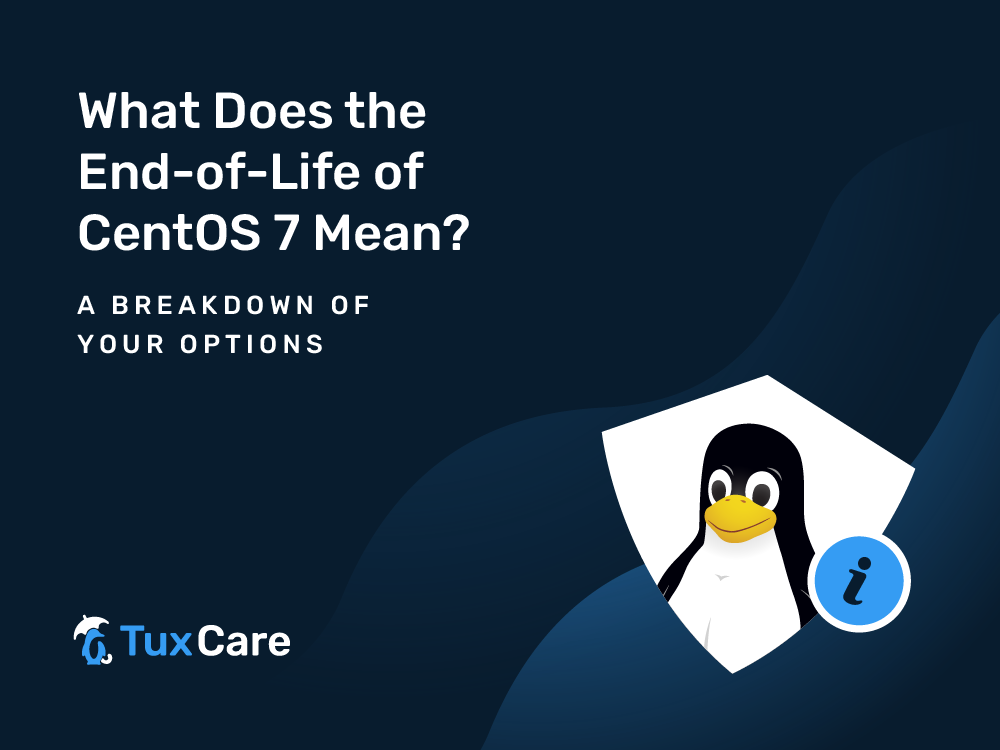What Does the End-of-Life of CentOS 7 Mean? A Breakdown of Your Options
As CentOS 7 approaches its end of life (EOL), it’s crucial for users and administrators to understand the implications of this transition. The EOL of CentOS 7 isn’t just a unique event but rather a common phenomenon in the lifecycle of Linux distributions. This article breaks down what EOL means, its impact, and the choices you have.
We recently presented a webinar covering this topic, and this article contains some of the key takeaways from it. If you prefer the video version, you can find it here.
Understanding “End of Life”
The end-of-life (EOL) period begins on a vendor-defined date marking the cessation of updates for a Linux distribution. This includes security updates, which are crucial for safeguarding against vulnerabilities. Post-EOL, official support also disappears, leaving users to tackle compatibility issues and bugs independently. A significant, yet often overlooked, impact is that third-party software will cease updates for the distribution, potentially affecting software performance and security.
Post-EOL Reality
Despite the cessation of updates and support, existing CentOS 7 systems will continue to function. New systems can still be deployed using existing ISO files or images. However, these systems become prime targets for vulnerabilities, as attackers are aware of the lack of ongoing security updates.
The Challenge of Upgrading
Upgrading from CentOS 7 involves substantial costs, including budget, time, and resources. The absence of a clear upgrade path from CentOS 7 complicates matters. Alternatives like AlmaLinux or Rocky Linux offer some respite, but transitioning an entire server fleet is a complex and resource-intensive process that includes planning, testing, and implementation. Critical systems’ migrations pose even higher risks.
Potential Migration Issues
Migration can lead to the loss of access to specific hardware due to driver incompatibilities, and custom workloads might not function correctly with new operating systems. Recertifying custom software or appliances for a new platform is another expensive and time-consuming task.
Risks of Running an EOL Distribution
Running an EOL distribution like CentOS 7 exposes you to unpatched security vulnerabilities. Compliance with industry regulations becomes challenging, and third-party applications might stop supporting deployments to CentOS 7. Furthermore, security advisories will no longer include CentOS 7, and vulnerability scanners will likely flag these systems as liabilities.
Exploring Options
- Isolation: Keeping EOL systems in highly restricted network segments is an option. However, this adds complexity and workload for network administrators and impacts the systems’ usefulness.
- Accepting the Risk: This might be viable for air-gapped or highly secure environments, but it limits the system’s utility and exposes critical workloads.
- Migration: Tools like the ELevate project can assist in transitioning to RHEL derivatives, but this is not a catch-all solution and may require significant effort.
- Extended Lifecycle Support: Offerings like TuxCare’s Extended Lifecycle Support (ELS) service provide a viable solution to this problem and require the least amount of work to adopt. Essentially, you continue to receive security updates for CentOS 7, only now from TuxCare’s repositories rather than your previous ones.
Parting Thoughts
The EOL of CentOS 7 presents various challenges and risks. Understanding these implications is key to making informed decisions about managing or migrating your systems. Whether choosing to isolate, accept the risk, migrate, or going with a long-term service like TuxCare’s Extended Lifecycle Support (ELS) option, each possibility requires careful consideration and planning.



 Documentation
Documentation Login
Login




